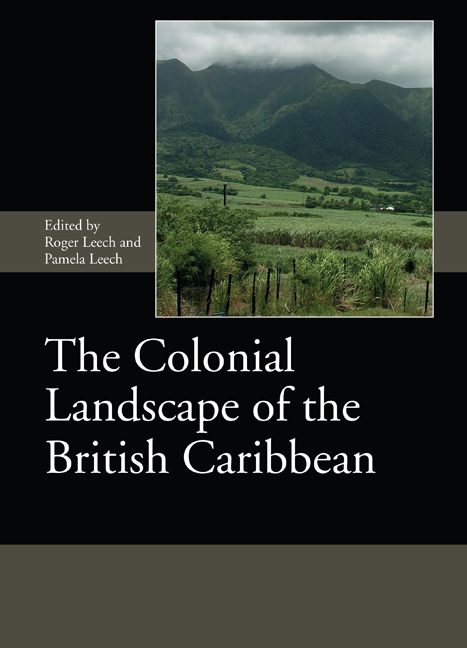1 - Caribbean Colonial Cartography: Exploring the Paper Landscape
Published online by Cambridge University Press: 31 March 2021
Summary
SUMMARY: This paper uses a variety of 18th-century examples of maps and sea charts of Caribbean colonies to explore how critical reading of cartography can contribute to archaeological investigation. It aims to show that maps and charts are sources of information not just about physical features and spatial relationships, or settlement processes and events. They also provide insights into human experience and interaction within the landscape.
INTRODUCTION
Bearing in mind J.B. Harley's proposition that ‘maps are a discourse of the acquisition and dispossession that lie at the heart of colonialism’, this paper will consider cartography's limitations as an objective record of landscape, given that all maps were (and are) drawn to fulfil a particular purpose or agenda, explicit or implicit. I also want to draw attention to the role that cartography had in the creation of colonial landscape, how lines drawn on paper became physical features on the ground, and how the use of maps influenced estate acquisition.
CONTEXT AND COMMUNICATIONS
It is an obvious truth but so fundamentally important that it is worth restating, that the Caribbean was essentially a maritime landscape, consisting of dispersed colonies whose reason for existence was the production of sugar for export, completely dependent on sea transport. Transport by sea was hampered by wind patterns and by currents, which make departure from the Caribbean far more problematic than arrival, and by the great distances involved. As Jamaica is 1,000 nautical miles downwind of Barbados, export voyages to Britain took several weeks longer. In consequence, shipping charges from Jamaica were higher and agricultural and refining processes had to be completed earlier in the year to enable the ships to beat the hurricane deadline. Because of the importance of shipping, the centres of population were the port towns, despite their inevitable location in the unhealthiest places. Bridgetown in Barbados, the capital of Britain's richest island colony, was built beside a pestilential swamp.
The map (Fig. 1.1) published by Speer in 1774 and endorsed by the Plantation Office, shows this geographical situation and adds the political dimension. The islands are coloured according to the nationality of their colonial masters. International rivalry ensured that the Caribbean was a fortified landscape and that some islands would have their settlement records complicated by sequential occupation by different European cultural groups.
- Type
- Chapter
- Information
- The Colonial Landscape of the British Caribbean , pp. 3 - 14Publisher: Boydell & BrewerPrint publication year: 2021



